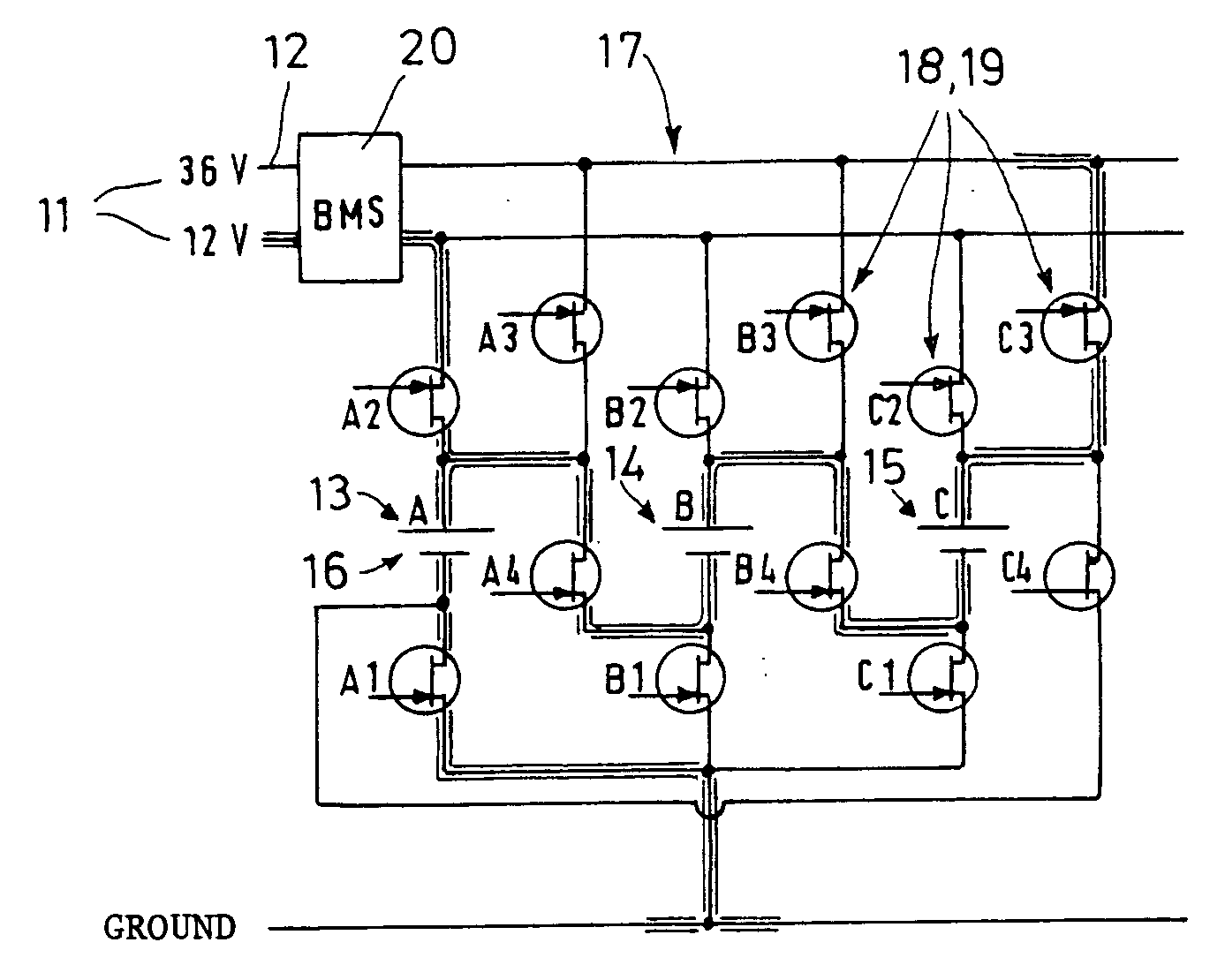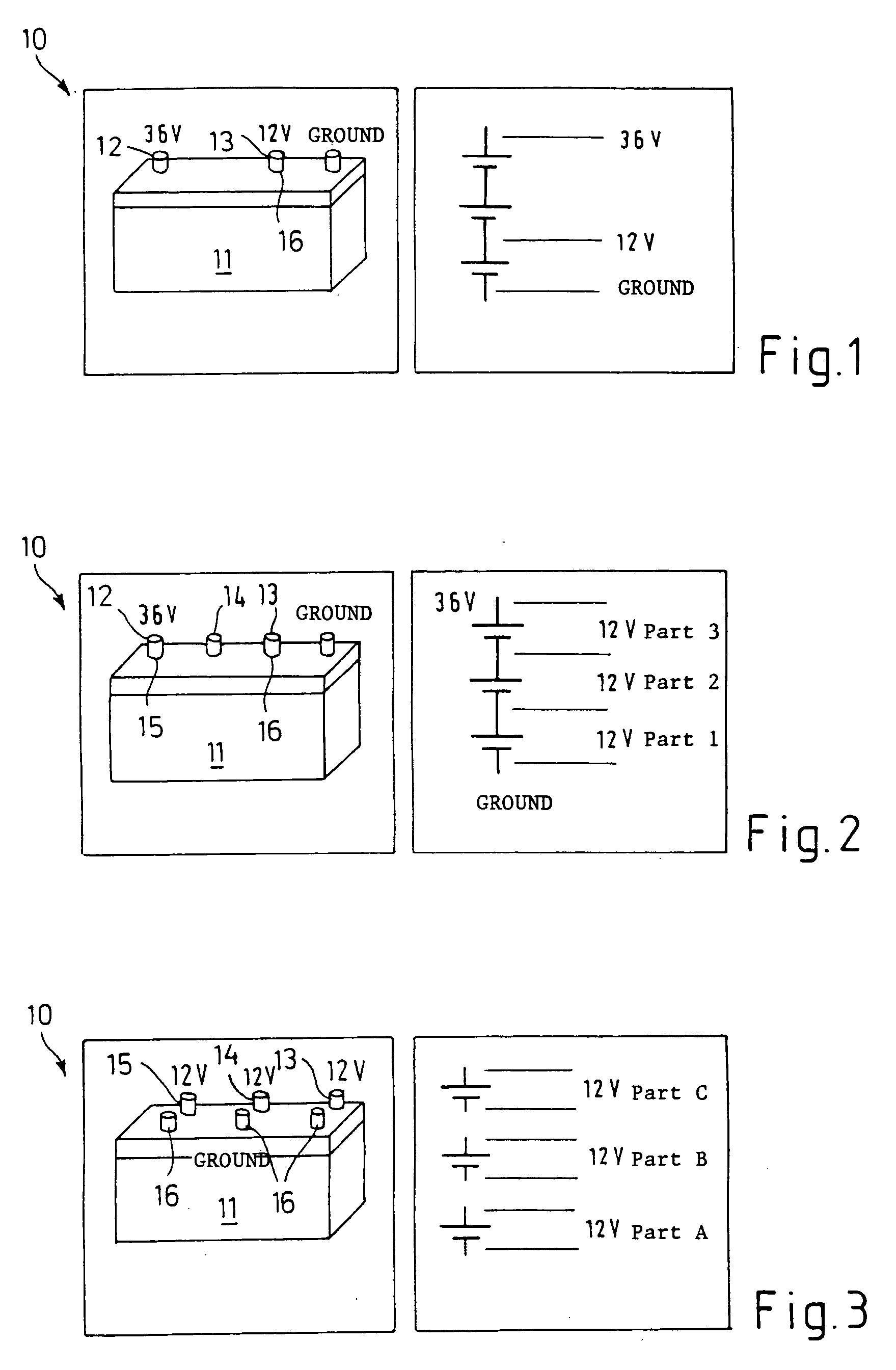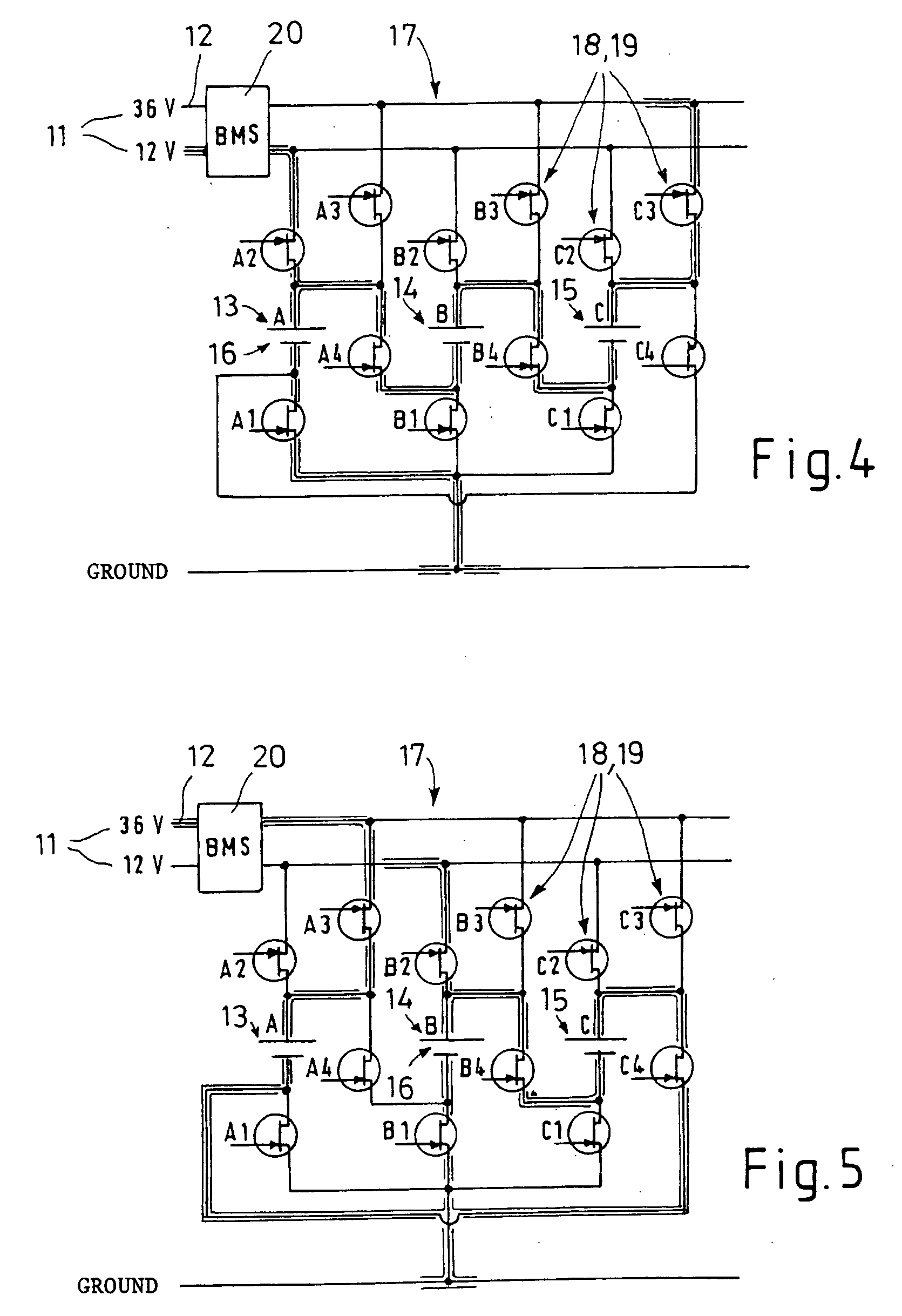Multi-voltage level power supply system
a power supply system and multi-voltage technology, applied in secondary cell servicing/maintenance, instruments, final product manufacturing, etc., can solve the problems of shortening the general life expectancy of the battery, the need for more than energy storage devices, and the battery cells carrying out unégal work, so as to save weight and the required accommodation space, and the battery capacity is high. , the effect of different aging distribution over tim
- Summary
- Abstract
- Description
- Claims
- Application Information
AI Technical Summary
Benefits of technology
Problems solved by technology
Method used
Image
Examples
Embodiment Construction
)
[0040] The power supply system according to the invention is annotated in general by 10. For this purpose, the power supply system 10 is illustrated in the form of a number of fundamental concepts, which are still to be explained, in FIGS. 1 to 3 of the drawing. The power supply system 10 is intended for vehicles with a two-voltage storage system, comprising an electrical 14 / 42 V two-voltage system, which is annotated 11, with a 36 V battery 12, which essentially has three alternately switchable 12 volt batteries 13, 14, 15, of which one can be connected as the first 12 volt part 16 between ground and 12 V, and with the respective devices for energy storage for the 14 V and 42 V system, with the 36 V battery 12 including the device for energy storage for the 12 V system and the device for energy storage for the 42 V system.
[0041] Various power supply systems 10 for vehicles with a two-voltage storage system and which have a 14 / 42 V electrical two-voltage system 11 are known in thi...
PUM
| Property | Measurement | Unit |
|---|---|---|
| voltage | aaaaa | aaaaa |
| voltage | aaaaa | aaaaa |
| voltage | aaaaa | aaaaa |
Abstract
Description
Claims
Application Information
 Login to View More
Login to View More - R&D
- Intellectual Property
- Life Sciences
- Materials
- Tech Scout
- Unparalleled Data Quality
- Higher Quality Content
- 60% Fewer Hallucinations
Browse by: Latest US Patents, China's latest patents, Technical Efficacy Thesaurus, Application Domain, Technology Topic, Popular Technical Reports.
© 2025 PatSnap. All rights reserved.Legal|Privacy policy|Modern Slavery Act Transparency Statement|Sitemap|About US| Contact US: help@patsnap.com



